Proteome-Wide Screening of Potential Vaccine Targets against Brucella melitensis
Abstract
1. Introduction
2. Materials and Methods
2.1. Proteomes Retrieval of B. melitensis
2.2. BPGA Analysis
2.3. CD-Hit Analysis
2.4. Subcellular Localization Phase
2.5. Homology Check
2.6. Vaccine Candidate’s Prioritization Phase
2.7. Virulent Protein Analysis
2.8. Physiochemical Analysis
2.9. Transmembrane Helices
2.10. Antigenicity Prediction
2.11. Adhesion Probability Analysis
2.12. Allergenicity of the Proteins
2.13. Epitopes Prediction
2.14. Physiochemical Analysis of the Predicated Epitopes
2.15. Multi-Epitopes Peptide Designing
2.16. Physiochemical Properties Analysis
2.17. Structural Prediction of Multi-Epitope Peptide
2.18. Galaxy Refinement
2.19. Disulfide Engineering
2.20. In Silico Codon Optimization and Coding
2.21. Docking and Refinement
2.22. Molecular Dynamics Stimulation (MDS) Assay
2.23. Free Energy of Immune Receptors and Vaccine Design
2.24. WaterSwap Validation and Entropy Analysis
3. Results
3.1. Retrieval of Complete Proteome, Bacterial Pan-Genome Analysis and Subtractive Proteomics Filters
3.2. Epitopes Prediction
3.3. Selection of Epitopes for Multi-Epitopes Vaccine Construction
3.4. Structure Prediction and Disulfide Engineering
3.5. Loops Refinement
3.6. Codon Optimization Phase
3.7. Docking and Refinement
3.8. MDS Analysis
3.9. Binding Free Energies Calculation
3.10. WaterSwap and Binding Entropy Calculation
4. Discussion
5. Conclusions
Supplementary Materials
Author Contributions
Funding
Institutional Review Board Statement
Informed Consent Statement
Data Availability Statement
Conflicts of Interest
References
- Caniça, M.; Manageiro, V.; Abriouel, H.; Moran-Gilad, J.; Franz, C.M.A.P. Antibiotic Resistance in Foodborne Bacteria. Trends Food Sci. Technol. 2019, 84, 41–44. [Google Scholar] [CrossRef]
- MacLean, R.C.; San Millan, A. The Evolution of Antibiotic Resistance. Science 2019, 365, 1082–1083. [Google Scholar] [CrossRef] [PubMed]
- Ventola, C.L. The Antibiotic Resistance Crisis: Part 2: Management Strategies and New Agents. Pharm. Ther. 2015, 40, 344. [Google Scholar]
- Masignani, V.; Pizza, M.; Moxon, E.R. The Development of a Vaccine against Meningococcus B Using Reverse Vaccinology. Front. Immunol. 2019, 10, 751. [Google Scholar] [CrossRef]
- Pollard, A.J.; Bijker, E.M. A Guide to Vaccinology: From Basic Principles to New Developments. Nat. Rev. Immunol. 2021, 21, 83–100. [Google Scholar] [CrossRef]
- Clem, A.S. Fundamentals of Vaccine Immunology. J. Glob. Infect Dis. 2011, 3, 73. [Google Scholar] [CrossRef]
- Bidmos, F.A.; Siris, S.; Gladstone, C.A.; Langford, P.R. Bacterial Vaccine Antigen Discovery in the Reverse Vaccinology 2.0 Era: Progress and Challenges. Front. Immunol. 2018, 9, 2315. [Google Scholar] [CrossRef]
- Ahmad, S.; Shahid, F.; Tahir ul Qamar, M.; Abbasi, S.W.; Sajjad, W.; Ismail, S.; Alrumaihi, F.; Allemailem, K.S.; Almatroudi, A.; Ullah Saeed, H.F. Immuno-Informatics Analysis of Pakistan-Based HCV Subtype-3a for Chimeric Polypeptide Vaccine Design. Vaccines 2021, 9, 293. [Google Scholar] [CrossRef] [PubMed]
- Dalsass, M.; Brozzi, A.; Medini, D.; Rappuoli, R. Comparison of Open-Source Reverse Vaccinology Programs for Bacterial Vaccine Antigen Discovery. Front. Immunol. 2019, 10, 113. [Google Scholar] [CrossRef]
- Abdullah, M.; Kadivella, M.; Sharma, R.; Faisal, S.M.; Azam, S. Designing of Multiepitope-Based Vaccine against Leptospirosis Using Immuno-Informatics Approaches. bioRxiv 2021. [Google Scholar] [CrossRef]
- Santos, A.; Ali, A.; Barbosa, E.; Silva, A.; Miyoshi, A.; Barh, D.; Azevedo, V. The Reverse Vaccinology-A Contextual Overview. IIOABJ 2011, 2, 8–15. [Google Scholar]
- Rappuoli, R. Reverse Vaccinology. Curr. Opin. Microbiol. 2000, 3, 445–450. [Google Scholar] [CrossRef]
- Adu-Bobie, J.; Capecchi, B.; Serruto, D.; Rappuoli, R.; Pizza, M. Two Years into Reverse Vaccinology. Vaccine 2003, 21, 605–610. [Google Scholar] [CrossRef]
- Mora, M.; Veggi, D.; Santini, L.; Pizza, M.; Rappuoli, R. Reverse Vaccinology. Drug Discov. Today 2003, 8, 459–464. [Google Scholar] [CrossRef] [PubMed]
- Delany, I.; Rappuoli, R.; Seib, K.L. Vaccines, Reverse Vaccinology, and Bacterial Pathogenesis. Cold Spring Harb. Perspect. Med. 2013, 3, a012476. [Google Scholar] [CrossRef]
- Mazlan, M.; Khairani-Bejo, S.; Hamzah, H.; Nasruddin, N.S.; Salleh, A.; Zamri-Saad, M. Pathological Changes, Distribution and Detection of Brucella Melitensis in Foetuses of Experimentally-Infected Does. Vet. Q. 2021, 41, 36–49. [Google Scholar] [CrossRef] [PubMed]
- World Organisation for Animal Health Brucellosis. (Brucella Abortus, B. Melitensis and B. Suis) (Infection with B. Abortus, B. Melitensis and B. Suis). Manual of Diagnostic Tests and Vaccines for Terrestrial Animals. 2016. Available online: https://www.woah.org/fileadmin/Home/fr/Health_standards/tahm/3.01.04_BRUCELLOSIS.pdf (accessed on 20 December 2022).
- Mantur, B.; Amarnath, S.; Shinde, R. Review of Clinical and Laboratory Features of Human Brucellosis. Indian J. Med. Microbiol. 2007, 25, 188–202. [Google Scholar] [CrossRef]
- de Figueiredo, P.; Ficht, T.A.; Rice-Ficht, A.; Rossetti, C.A.; Adams, L.G. Pathogenesis and Immunobiology of Brucellosis: Review of Brucella--Host Interactions. Am. J. Pathol. 2015, 185, 1505–1517. [Google Scholar] [CrossRef] [PubMed]
- Ponsart, C.; Riou, M.; Locatelli, Y.; Jacques, I.; Fadeau, A.; Jay, M.; Simon, R.; Perrot, L.; Freddi, L.; Breton, S.; et al. Brucella Melitensis Rev.1 Vaccination Generates a Higher Shedding Risk of the Vaccine Strain in Alpine Ibex (Capra Ibex) Compared to the Domestic Goat (Capra Hircus). Vet. Res. 2019, 50, 1–13. [Google Scholar] [CrossRef]
- González, D.; Grilló, M.J.; de Miguel, M.J.; Ali, T.; Arce-Gorvel, V.; Delrue, R.M.; Conde-Álvarez, R.; Muñoz, P.; López-Goñi, I.; Iriarte, M.; et al. Brucellosis Vaccines: Assessment of Brucella Melitensis Lipopolysaccharide Rough Mutants Defective in Core and O-Polysaccharide Synthesis and Export. PLoS ONE 2008, 3, e2760. [Google Scholar] [CrossRef] [PubMed]
- Costa Oliveira, S.; Costa Macedo, G.; Augusto de Almeida, L.; Souza de Oliveira, F.; Onate, A.; Cassataro, J.; Hernan Giambartolomei, G. Recent Advances in Understanding Immunity Against Brucellosis: Application for Vaccine Development. Open Vet. Sci. J. 2014, 4. [Google Scholar] [CrossRef]
- Dorneles, E.M.S.; Sriranganathan, N.; Lage, A.P. Recent Advances in Brucella Abortus Vaccines. Vet. Res. 2015, 46, 1–10. [Google Scholar] [CrossRef] [PubMed]
- Yang, X.; Hudson, M.; Walters, N.; Bargatze, R.F.; Pascual, D.W. Selection of Protective Epitopes for Brucella Melitensis by DNA Vaccination. Infect. Immun. 2005, 73, 7297–7303. [Google Scholar] [CrossRef]
- Mugunthan, S.P.; Harish, M.C. Multi-Epitope-Based Vaccine Designed by Targeting Cytoadherence Proteins of Mycoplasma Gallisepticum. ACS Omega 2021, 6, 13742–13755. [Google Scholar] [CrossRef] [PubMed]
- Adeoti, O.M. Prediction of Multi-Epitopic Domains of a Putative Oral Vaccine against Hepatitis C Virus. Int. J. Immunol. Microbiol. 2021, 1, 16–22. [Google Scholar] [CrossRef]
- Ud-Din, M.; Albutti, A.; Ullah, A.; Ismail, S.; Ahmad, S.; Naz, A.; Khurram, M.; Haq, M.; Afsheen, Z.; Bakri, Y.; et al. Vaccinomics to Design a Multi-Epitopes Vaccine for Acinetobacter Baumannii. Int. J. Environ. Res. Public Health 2022, 19, 5568. [Google Scholar] [CrossRef]
- Fatima, I.; Ahmad, S.; Abbasi, S.W.; Ashfaq, U.A.; Shahid, F.; ul Qamar, M.T.; Rehman, A.; Allemailem, K.S. Designing of a Multi-Epitopes-Based Peptide Vaccine against Rift Valley Fever Virus and Its Validation through Integrated Computational Approaches. Comput. Biol. Med. 2022, 141, 105151. [Google Scholar] [CrossRef]
- Ismail, S.; Abbasi, S.W.; Yousaf, M.; Ahmad, S.; Muhammad, K.; Waheed, Y. Design of a Multi-Epitopes Vaccine against Hantaviruses: An Immunoinformatics and Molecular Modelling Approach. Vaccines 2022, 10, 378. [Google Scholar] [CrossRef]
- Omoniyi, A.A.; Adebisi, S.S.; Musa, S.A.; Nzalak, J.O.; Danborno, B.; Bauchi, Z.M.; Badmus, I.T.; Olatomide, O.D.; Oladimeji, O.J.; Nyengaard, J.R. Immunoinformatics Analysis and In-Silico Design of Multi-Epitopes Vaccine Against Lassa Virus. 2021. Available online: https://assets.researchsquare.com/files/rs-355782/v1/9bf6a115-7a8a-4638-a451-8d0a7330b307.pdf?c=1637244600 (accessed on 22 December 2022).
- Alharbi, M.; Alshammari, A.; Alasmari, A.F.; Alharbi, S.M.; ul Qamar, M.; Ullah, A.; Ahmad, S.; Irfan, M.; Khalil, A.A.K. Designing of a Recombinant Multi-Epitopes Based Vaccine against Enterococcus Mundtii Using Bioinformatics and Immunoinformatics Approaches. Int. J. Environ. Res. Public Health 2022, 19, 3729. [Google Scholar] [CrossRef]
- Rida, T.; Ahmad, S.; Ullah, A.; Ismail, S.; Tahir ul Qamar, M.; Afsheen, Z.; Khurram, M.; Saqib Ishaq, M.; Alkhathami, A.G.; Alatawi, E.A. Pan-Genome Analysis of Oral Bacterial Pathogens to Predict a Potential Novel Multi-Epitopes Vaccine Candidate. Int. J. Environ. Res. Public Health 2022, 19, 8408. [Google Scholar] [CrossRef]
- Ullah, A.; Ahmad, S.; Ismail, S.; Afsheen, Z.; Khurram, M.; Tahir ul Qamar, M.; AlSuhaymi, N.; Alsugoor, M.H.; Allemailem, K.S. Towards A Novel Multi-Epitopes Chimeric Vaccine for Simulating Strong Immune Responses and Protection against Morganella Morganii. Int. J. Environ. Res. Public Health 2021, 18, 10961. [Google Scholar] [CrossRef] [PubMed]
- Coordinators, N.R. Database Resources of the National Center for Biotechnology Information. Nucleic Acids Res. 2017, 45, D12. [Google Scholar]
- Chaudhari, N.M.; Gupta, V.K.; Dutta, C. BPGA-an Ultra-Fast Pan-Genome Analysis Pipeline. Sci. Rep. 2016, 6, 24373. [Google Scholar] [CrossRef]
- Sajjad, R.; Ahmad, S.; Azam, S.S. In Silico Screening of Antigenic B-Cell Derived T-Cell Epitopes and Designing of a Multi-Epitope Peptide Vaccine for Acinetobacter Nosocomialis. J. Mol. Graph. Model 2020, 94, 107477. [Google Scholar] [CrossRef] [PubMed]
- Ahmad, S.; Azam, S.S. A Novel Approach of Virulome Based Reverse Vaccinology for Exploring and Validating Peptide-Based Vaccine Candidates against the Most Troublesome Nosocomial Pathogen: Acinetobacter Baumannii. J. Mol. Graph. Model 2018, 83, 1–11. [Google Scholar] [CrossRef]
- Ismail, S.; Ahmad, S.; Azam, S.S. Vaccinomics to Design a Novel Single Chimeric Subunit Vaccine for Broad-Spectrum Immunological Applications Targeting Nosocomial Enterobacteriaceae Pathogens. Eur. J. Pharm. Sci. 2020, 146, 105258. [Google Scholar] [CrossRef] [PubMed]
- Ismail, S.; Ahmad, S.; Azam, S.S. Immunoinformatics Characterization of SARS-CoV-2 Spike Glycoprotein for Prioritization of Epitope Based Multivalent Peptide Vaccine. J. Mol. Liq. 2020, 314, 113612. [Google Scholar] [CrossRef] [PubMed]
- Sanober, G.; Ahmad, S.; Azam, S.S. Identification of Plausible Drug Targets by Investigating the Druggable Genome of MDR Staphylococcus Epidermidis. Gene Rep. 2017, 7, 147–153. [Google Scholar] [CrossRef]
- Huang, Y.; Niu, B.; Gao, Y.; Fu, L.; Li, W. CD-HIT Suite: A Web Server for Clustering and Comparing Biological Sequences. Bioinformatics 2010, 26, 680–682. [Google Scholar] [CrossRef]
- Fu, L.; Niu, B.; Zhu, Z.; Wu, S.; Li, W. CD-HIT: Accelerated for Clustering the next-Generation Sequencing Data. Bioinformatics 2012, 28, 3150–3152. [Google Scholar] [CrossRef]
- Li, W.; Godzik, A. Cd-Hit: A Fast Program for Clustering and Comparing Large Sets of Protein or Nucleotide Sequences. Bioinformatics 2006, 22, 1658–1659. [Google Scholar] [CrossRef] [PubMed]
- Abbas, G.; Zafar, I.; Ahmad, S.; Azam, S.S. Immunoinformatics Design of a Novel Multi-Epitope Peptide Vaccine to Combat Multi-Drug Resistant Infections Caused by Vibrio Vulnificus. Eur. J. Pharm. Sci. 2020, 142, 105160. [Google Scholar] [CrossRef] [PubMed]
- Ahmad, S.; Raza, S.; Uddin, R.; Azam, S.S. Comparative Subtractive Proteomics Based Ranking for Antibiotic Targets against the Dirtiest Superbug: Acinetobacter Baumannii. J. Mol. Graph. Model 2018, 82, 74–92. [Google Scholar] [CrossRef]
- Rashid, M.I.; Naz, A.; Ali, A.; Andleeb, S. Prediction of Vaccine Candidates against Pseudomonas Aeruginosa: An Integrated Genomics and Proteomics Approach. Genomics 2017, 109, 274–283. [Google Scholar] [CrossRef] [PubMed]
- Naz, K.; Naz, A.; Ashraf, S.T.; Rizwan, M.; Ahmad, J.; Baumbach, J.; Ali, A. PanRV: Pangenome-Reverse Vaccinology Approach for Identifications of Potential Vaccine Candidates in Microbial Pangenome. BMC Bioinform. 2019, 20, 123. [Google Scholar] [CrossRef] [PubMed]
- Rizwan, M.; Naz, A.; Ahmad, J.; Naz, K.; Obaid, A.; Parveen, T.; Ahsan, M.; Ali, A. VacSol: A High Throughput in Silico Pipeline to Predict Potential Therapeutic Targets in Prokaryotic Pathogens Using Subtractive Reverse Vaccinology. BMC Bioinform. 2017, 18, 106. [Google Scholar] [CrossRef]
- Yu, N.Y.; Wagner, J.R.; Laird, M.R.; Melli, G.; Rey, S.; Lo, R.; Dao, P.; Sahinalp, S.C.; Ester, M.; Foster, L.J.; et al. PSORTb 3.0: Improved Protein Subcellular Localization Prediction with Refined Localization Subcategories and Predictive Capabilities for All Prokaryotes. Bioinformatics 2010, 26, 1608–1615. [Google Scholar] [CrossRef]
- Blast, N. Basic Local Alignment Search Tool. National Library of Medicine: National Center for Biotechnology Information. 2015. Available online: https://blast.ncbi.nlm.nih.gov/Blast.cgi (accessed on 20 December 2022).
- Naz, K.; Ullah, N.; Naz, A.; Irum, S.; Dar, H.A.; Zaheer, T.; Shahid, F.; Ali, A. The Epidemiological and Pangenome Landscape of Staphylococcus Aureus and Identification of Conserved Novel Candidate Vaccine Antigens. Curr. Proteom. 2022, 19, 114–126. [Google Scholar] [CrossRef]
- Ahmad, S.; Ranaghan, K.E.; Azam, S.S. Combating Tigecycline Resistant Acinetobacter Baumannii: A Leap Forward towards Multi-Epitope Based Vaccine Discovery. Eur. J. Pharm. Sci. 2019, 132, 1–17. [Google Scholar] [CrossRef]
- Ma, J.; Qiu, J.; Wang, S.; Ji, Q.; Xu, D.; Wang, H.; Wu, Z.; Liu, Q. A Novel Design of Multi-Epitope Vaccine Against Helicobacter Pylori by Immunoinformatics Approach. Int. J. Pept. Res. Ther. 2021, 27, 1027–1042. [Google Scholar] [CrossRef]
- Chen, L.; Yang, J.; Yu, J.; Yao, Z.; Sun, L.; Shen, Y.; Jin, Q. VFDB: A Reference Database for Bacterial Virulence Factors. Nucleic Acids Res. 2005, 33, D325–D328. [Google Scholar] [CrossRef]
- Baseer, S.; Ahmad, S.; Ranaghan, K.E.; Azam, S.S. Towards a Peptide-Based Vaccine against Shigella Sonnei: A Subtractive Reverse Vaccinology Based Approach. Biologicals 2017, 50, 87–99. [Google Scholar] [CrossRef]
- Asad, Y.; Ahmad, S.; Rungrotmongkol, T.; Ranaghan, K.E.; Azam, S.S. Immuno-Informatics Driven Proteome-Wide Investigation Revealed Novel Peptide-Based Vaccine Targets against Emerging Multiple Drug Resistant Providencia Stuartii. J. Mol. Graph. Model 2018, 80, 238–250. [Google Scholar] [CrossRef]
- ProtParam, E. ExPASy-ProtParam Tool; SIB: Lausanne, Switzerland, 2017. [Google Scholar]
- Albekairi, T.H.; Alshammari, A.; Alharbi, M.; Alshammary, A.F.; Tahir ul Qamar, M.; Ullah, A.; Irfan, M.; Ahmad, S. Designing of a Novel Multi-Antigenic Epitope-Based Vaccine against E. Hormaechei: An Intergraded Reverse Vaccinology and Immunoinformatics Approach. Vaccines 2022, 10, 665. [Google Scholar] [CrossRef] [PubMed]
- Tusnady, G.E.; Simon, I. The HMMTOP Transmembrane Topology Prediction Server. Bioinformatics 2001, 17, 849–850. [Google Scholar] [CrossRef]
- Chen, Y.; Yu, P.; Luo, J.; Jiang, Y. Secreted Protein Prediction System Combining CJ-SPHMM, TMHMM, and PSORT. Mamm. Genome 2003, 14, 859–865. [Google Scholar] [CrossRef] [PubMed]
- Wang, Y.; Wu, W.; Negre, N.N.; White, K.P.; Li, C.; Shah, P.K. Determinants of Antigenicity and Specificity in Immune Response for Protein Sequences. BMC Bioinform. 2011, 12, 1–13. [Google Scholar] [CrossRef] [PubMed]
- Doytchinova, I.A.; Flower, D.R. VaxiJen: A Server for Prediction of Protective Antigens, Tumour Antigens and Subunit Vaccines. BMC Bioinform. 2007, 8, 4. [Google Scholar] [CrossRef] [PubMed]
- Bonilla, F.A.; Oettgen, H.C. Adaptive Immunity. J. Allergy Clin. Immunol. 2010, 125, S33–S40. [Google Scholar] [CrossRef] [PubMed]
- He, Y.; Xiang, Z.; Mobley, H.L.T. Vaxign: The First Web-Based Vaccine Design Program for Reverse Vaccinology and Applications for Vaccine Development. Biomed. Res. Int. 2010, 2010, 297505. [Google Scholar] [CrossRef]
- Dimitrov, I.; Flower, D.R.; Doytchinova, I. AllerTOP-a Server for in Silico Prediction of Allergens. BMC Bioinform. 2013, 14, S4. [Google Scholar] [CrossRef] [PubMed]
- Dhanda, S.K.; Mahajan, S.; Paul, S.; Yan, Z.; Kim, H.; Jespersen, M.C.; Jurtz, V.; Andreatta, M.; Greenbaum, J.A.; Marcatili, P. IEDB-AR: Immune Epitope Database—Analysis Resource in 2019. Nucleic Acids Res. 2019, 47, W502–W506. [Google Scholar] [CrossRef]
- Guan, P.; Doytchinova, I.A.; Zygouri, C.; Flower, D.R. MHCPred: A Server for Quantitative Prediction of Peptide--MHC Binding. Nucleic Acids Res. 2003, 31, 3621–3624. [Google Scholar] [CrossRef] [PubMed]
- Naz, A.; Awan, F.M.; Obaid, A.; Muhammad, S.A.; Paracha, R.Z.; Ahmad, J.; Ali, A. Identification of Putative Vaccine Candidates against Helicobacter Pylori Exploiting Exoproteome and Secretome: A Reverse Vaccinology Based Approach. Infect. Genet. Evol. 2015, 32, 280–291. [Google Scholar] [CrossRef] [PubMed]
- Garg, A.; Gupta, D. VirulentPred: A SVM Based Prediction Method for Virulent Proteins in Bacterial Pathogens. BMC Bioinform. 2008, 9, 62. [Google Scholar] [CrossRef] [PubMed]
- Gupta, S.; Kapoor, P.; Chaudhary, K.; Gautam, A.; Kumar, R.; Raghava, G.P.S. Peptide Toxicity Prediction. In Computational Peptidology; Springer: Cham, Switzerland, 2015; pp. 143–157. [Google Scholar]
- Malonis, R.J.; Lai, J.R.; Vergnolle, O. Peptide-Based Vaccines: Current Progress and Future Challenges. Chem. Rev. 2019, 120, 3210–3229. [Google Scholar] [CrossRef]
- Reche, P.A.; Fernandez-Caldas, E.; Flower, D.R.; Fridkis-Hareli, M.; Hoshino, Y. Peptide-Based Immunotherapeutics and Vaccines. J. Immunol. Res. 2014, 2014, 256784. [Google Scholar] [CrossRef]
- Alshammari, A.; Alharbi, M.; Alghamdi, A.; Alharbi, S.A.; Ashfaq, U.A.; Tahir ul Qamar, M.; Ullah, A.; Irfan, M.; Khan, A.; Ahmad, S. Computer-Aided Multi-Epitope Vaccine Design against Enterobacter Xiangfangensis. Int. J. Environ. Res. Public Health 2022, 19, 7723. [Google Scholar] [CrossRef] [PubMed]
- Baldauf, K.J.; Royal, J.M.; Hamorsky, K.T.; Matoba, N. Cholera Toxin B: One Subunit with Many Pharmaceutical Applications. Toxins 2015, 7, 974–996. [Google Scholar] [CrossRef]
- Stratmann, T. Cholera Toxin Subunit B as Adjuvant----an Accelerator in Protective Immunity and a Break in Autoimmunity. Vaccines 2015, 3, 579–596. [Google Scholar] [CrossRef]
- Antonio-Herrera, L.; Badillo-Godinez, O.; Medina-Contreras, O.; Tepale-Segura, A.; García-Lozano, A.; Gutierrez-Xicotencatl, L.; Soldevila, G.; Esquivel-Guadarrama, F.R.; Idoyaga, J.; Bonifaz, L.C. The Nontoxic Cholera B Subunit Is a Potent Adjuvant for Intradermal DC-Targeted Vaccination. Front. Immunol. 2018, 9, 2212. [Google Scholar] [CrossRef] [PubMed]
- Cheng, J.; Randall, A.Z.; Sweredoski, M.J.; Baldi, P. SCRATCH: A Protein Structure and Structural Feature Prediction Server. Nucleic Acids Res. 2005, 33, W72–W76. [Google Scholar] [CrossRef]
- Ko, J.; Park, H.; Heo, L.; Seok, C. GalaxyWEB Server for Protein Structure Prediction and Refinement. Nucleic Acids Res. 2012, 40, W294–W297. [Google Scholar] [CrossRef]
- Heo, L.; Park, H.; Seok, C. GalaxyRefine: Protein Structure Refinement Driven by Side-Chain Repacking. Nucleic Acids Res. 2013, 41, W384–W388. [Google Scholar] [CrossRef] [PubMed]
- Craig, D.B.; Dombkowski, A.A. Disulfide by Design 2.0: A Web-Based Tool for Disulfide Engineering in Proteins. BMC Bioinform. 2013, 14, 346. [Google Scholar] [CrossRef] [PubMed]
- Grote, A.; Hiller, K.; Scheer, M.; Münch, R.; Nörtemann, B.; Hempel, D.C.; Jahn, D. JCat: A Novel Tool to Adapt Codon Usage of a Target Gene to Its Potential Expression Host. Nucleic Acids Res. 2005, 33, W526–W531. [Google Scholar] [CrossRef]
- Ahmad, S.; Navid, A.; Farid, R.; Abbas, G.; Ahmad, F.; Zaman, N.; Parvaiz, N.; Azam, S.S. Design of a Novel Multi Epitope-Based Vaccine for Pandemic Coronavirus Disease (COVID-19) by Vaccinomics and Probable Prevention Strategy against Avenging Zoonotics. Eur. J. Pharm. Sci. 2020, 151, 105387. [Google Scholar] [CrossRef] [PubMed]
- Morris, G.M.; Lim-Wilby, M. Molecular Docking. In Molecular Modeling of Proteins; Springer: Cham, Switzerland, 2008; pp. 365–382. [Google Scholar]
- Schneidman-Duhovny, D.; Inbar, Y.; Nussinov, R.; Wolfson, H.J. PatchDock and SymmDock: Servers for Rigid and Symmetric Docking. Nucleic Acids Res. 2005, 33, W363–W367. [Google Scholar] [CrossRef]
- Andrusier, N.; Nussinov, R.; Wolfson, H.J. FireDock: Fast Interaction Refinement in Molecular Docking. Proteins Struct. Funct. Bioinform. 2007, 69, 139–159. [Google Scholar] [CrossRef]
- Kaliappan, S.; Bombay, I.I.T. UCSF Chimera-Overview. 2018. Available online: http://doer.col.org/handle/123456789/9120 (accessed on 16 October 2022).
- Hansson, T.; Oostenbrink, C.; van Gunsteren, W. Molecular Dynamics Simulations. Curr. Opin. Struct. Biol. 2002, 12, 190–196. [Google Scholar] [CrossRef]
- Case, D.A.; Belfon, K.; Ben-Shalom, I.; Brozell, S.R.; Cerutti, D.; Cheatham, T.; Cruzeiro, V.W.D.; Darden, T.; Duke, R.E.; Giambasu, G.; et al. Amber 2020. Available online: https://ambermd.org/doc12/Amber20.pdf (accessed on 23 December 2022).
- Kerrigan, J.E. AMBER 10.0 Introductory Tutorial; Citeseer: Princeton, NJ, USA, 2009. [Google Scholar]
- Case, D.A.; Babin, V.; Berryman, J.T.; Betz, R.M.; Cai, Q.; Cerutti, D.S.; Cheatham, T.E., III; Darden, T.A.; Duke, R.E.; Gohlke, H.; et al. The FF14SB Force Field. Amber 2014, 14, 29–31. [Google Scholar]
- Kräutler, V.; van Gunsteren, W.F.; Hünenberger, P.H. A Fast SHAKE Algorithm to Solve Distance Constraint Equations for Small Molecules in Molecular Dynamics Simulations. J. Comput. Chem. 2001, 22, 501–508. [Google Scholar] [CrossRef]
- Roe, D.R.; Cheatham, T.E., III. PTRAJ and CPPTRAJ: Software for Processing and Analysis of Molecular Dynamics Trajectory Data. J. Chem. Theory Comput. 2013, 9, 3084–3095. [Google Scholar] [CrossRef]
- Turner, P.J. XMGRACE, Version 5.1. 19. Center for Coastal and Land-Margin Research; Oregon Graduate Institute of Science and Technology: Beaverton, OR, USA, 2005. [Google Scholar]
- Miller, B.R.; McGee, T.D.; Swails, J.M.; Homeyer, N.; Gohlke, H.; Roitberg, A.E. MMPBSA.Py: An Efficient Program for End-State Free Energy Calculations. J. Chem. Theory Comput. 2012, 8, 3314–3321. [Google Scholar] [CrossRef]
- Sahakyan, H. Improving Virtual Screening Results with MM/GBSA and MM/PBSA Rescoring. J. Comput Aided Mol. Des. 2021, 35, 731–736. [Google Scholar] [CrossRef] [PubMed]
- Genheden, S.; Ryde, U. The MM/PBSA and MM/GBSA Methods to Estimate Ligand-Binding Affinities. Expert Opin. Drug Discov. 2015, 10, 449–461. [Google Scholar] [CrossRef] [PubMed]
- Woods, C.J.; Malaisree, M.; Hannongbua, S.; Mulholland, A.J. A Water-Swap Reaction Coordinate for the Calculation of Absolute Protein-Ligand Binding Free Energies. J. Chem. Phys. 2011, 134, 054114. [Google Scholar] [CrossRef] [PubMed]
- Genheden, S.; Kuhn, O.; Mikulskis, P.; Hoffmann, D.; Ryde, U. The Normal-Mode Entropy in the MM/GBSA Method: Effect of System Truncation, Buffer Region, and Dielectric Constant. J. Chem. Inf. Model 2012, 52, 2079–2088. [Google Scholar] [CrossRef] [PubMed]
- Sun, J.; Czerkinsky, C.; Holmgren, J. Mucosally Induced Immunological Tolerance, Regulatory T Cells and the Adjuvant Effect by Cholera Toxin B Subunit. Scand. J. Immunol. 2010, 71, 1–11. [Google Scholar] [CrossRef]
- Sargsyan, K.; Grauffel, C.; Lim, C. How Molecular Size Impacts RMSD Applications in Molecular Dynamics Simulations. J. Chem. Theory Comput. 2017, 13, 1518–1524. [Google Scholar] [CrossRef]
- Ahmad, S.; Raza, S.; Uddin, R.; Azam, S.S. Binding Mode Analysis, Dynamic Simulation and Binding Free Energy Calculations of the MurF Ligase from Acinetobacter Baumannii. J. Mol. Graph. Model. 2017, 77, 72–85. [Google Scholar] [CrossRef]
- Bergström, C.A.S.; Larsson, P. Computational Prediction of Drug Solubility in Water-Based Systems: Qualitative and Quantitative Approaches Used in the Current Drug Discovery and Development Setting. Int. J. Pharm. 2018, 540, 185–193. [Google Scholar] [CrossRef] [PubMed]
- Ben-Shalom, I.; Lin, C.; Radak, B.; Sherman, W.; Gilson, M. Fast Equilibration of Water between Buried Sites and Bulk by MD with Parallel Monte Carlo Water Moves on GPUs. ChemRxiv 2021. Available online: https://chemrxiv.org/engage/chemrxiv/article-details/6123cb101d1cc2684fcab40a (accessed on 16 October 2022).
- Tacconelli, E.; Carrara, E.; Savoldi, A.; Harbarth, S.; Mendelson, M.; Monnet, D.L.; Pulcini, C.; Kahlmeter, G.; Kluytmans, J.; Carmeli, Y.; et al. Discovery, Research, and Development of New Antibiotics: The WHO Priority List of Antibiotic-Resistant Bacteria and Tuberculosis. Lancet Infect Dis. 2018, 18, 318–327. [Google Scholar] [CrossRef]
- Tacconelli, E.; Magrini, N.; Kahlmeter, G.; Singh, N. Global Priority List of Antibiotic-Resistant Bacteria to Guide Research, Discovery, and Development of New Antibiotics. World Health Organ. 2017, 27. Available online: https://www.thelancet.com/journals/laninf/article/PIIS1473-3099(17)30753-3/fulltext (accessed on 16 October 2022).
- Bijker, M.S.; Melief, C.J.M.; Offringa, R.; van der Burg, S.H. Design and Development of Synthetic Peptide Vaccines: Past, Present and Future. Expert Rev. Vaccines 2007, 6, 591–603. [Google Scholar] [CrossRef]
- Zhang, L. Multi-Epitope Vaccines: A Promising Strategy against Tumors and Viral Infections. Cell. Mol. Immunol. 2018, 15, 182. [Google Scholar] [CrossRef]
- Rappuoli, R. From Pasteur to Genomics: Progress and Challenges in Infectious Diseases. Nat. Med. 2004, 10, 1177. [Google Scholar] [CrossRef]
- del Tordello, E.; Rappuoli, R.; Delany, I. Reverse Vaccinology: Exploiting Genomes for Vaccine Design. In Human Vaccines; Elsevier: Amsterdam, The Netherlands, 2017; pp. 65–86. [Google Scholar]
- Shevtsov, A.; Syzdykov, M.; Kuznetsov, A.; Shustov, A.; Shevtsova, E.; Berdimuratova, K.; Mukanov, K.; Ramankulov, Y. Antimicrobial Susceptibility of Brucella Melitensis in Kazakhstan. Antimicrob. Resist Infect. Control. 2017, 6, 1–5. [Google Scholar] [CrossRef] [PubMed]
- Ehsan, N.; Ahmad, S.; Navid, A.; Azam, S.S. Identification of Potential Antibiotic Targets in the Proteome of Multi-Drug Resistant Proteus Mirabilis. Meta Gene 2018, 18, 167–173. [Google Scholar] [CrossRef]
- Gul, S.; Ahmad, S.; Ullah, A.; Ismail, S.; Khurram, M.; Tahir ul Qamar, M.; Hakami, A.R.; Alkhathami, A.G.; Alrumaihi, F.; Allemailem, K.S. Designing a Recombinant Vaccine against Providencia Rettgeri Using Immunoinformatics Approach. Vaccines 2022, 10, 189. [Google Scholar] [CrossRef] [PubMed]
- Munia, M.; Mahmud, S.; Mohasin, M.; Kibria, K.M.K. In Silico Design of an Epitope-Based Vaccine against Choline Binding Protein A of Streptococcus Pneumoniae. Inf. Med. Unlocked 2021, 23, 100546. [Google Scholar] [CrossRef]
- Zargaran, F.N.; Akya, A.; Rezaeian, S.; Ghadiri, K.; Lorestani, R.C.; Madanchi, H.; Safaei, S.; Rostamian, M. B Cell Epitopes of Four Fimbriae Antigens of Klebsiella Pneumoniae: A Comprehensive in Silico Study for Vaccine Development. Int. J. Pept. Res. Ther. 2021, 27, 875–886. [Google Scholar] [CrossRef]
- Li, M.; Zhu, Y.; Niu, C.; Xie, X.; Haimiti, G.; Guo, W.; Yu, M.; Chen, Z.; Ding, J.; Zhang, F. Design of a Multi-Epitope Vaccine Candidate against Brucella Melitensis. Sci. Rep. 2022, 12, 10146. [Google Scholar] [CrossRef]
- Yao, M.; Guo, X.; Wu, X.; Bai, Q.; Sun, M.; Yin, D. Evaluation of the Combined Use of Major Outer Membrane Proteins in the Serodiagnosis of Brucellosis. Infect. Drug Resist. 2022, 15, 4093–4100. [Google Scholar] [CrossRef] [PubMed]
- Kazi, A.; Chuah, C.; Majeed, A.B.A.; Leow, C.H.; Lim, B.H.; Leow, C.Y. Current Progress of Immunoinformatics Approach Harnessed for Cellular-and Antibody-Dependent Vaccine Design. Pathog Glob Health 2018, 112, 123–131. [Google Scholar] [CrossRef] [PubMed]
- Gupta, N.; Khan, F.; Kumar, A. Exploring Highly Antigenic Protein of Campylobacter Jejuni for Designing Epitope Based Vaccine: Immunoinformatics Approach. Int. J. Pept. Res. Ther. 2019, 25, 1159–1172. [Google Scholar] [CrossRef]
- Sheth, H.B.; Glasier, L.M.; Ellert, N.W.; Cachia, P.; Kohn, W.; Lee, K.K.; Paranchych, W.; Hodges, R.S.; Irvin, R.T. Development of an Anti-Adhesive Vaccine for Pseudomonas Aeruginosa Targeting the C-Terminal Region of the Pilin Structural Protein. Biomed Pept. Proteins Nucleic Acids 1995, 1, 141–148. [Google Scholar] [PubMed]

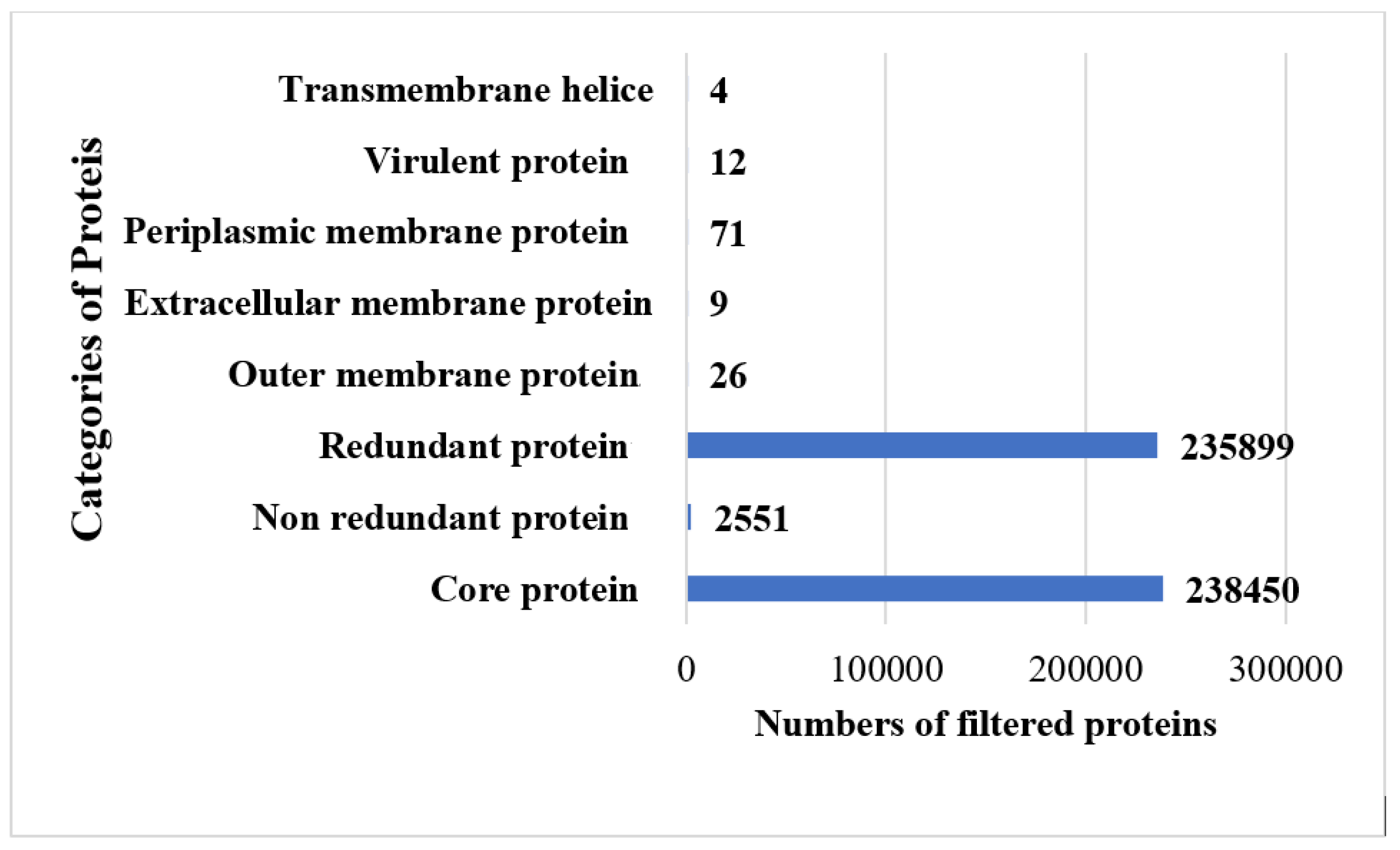
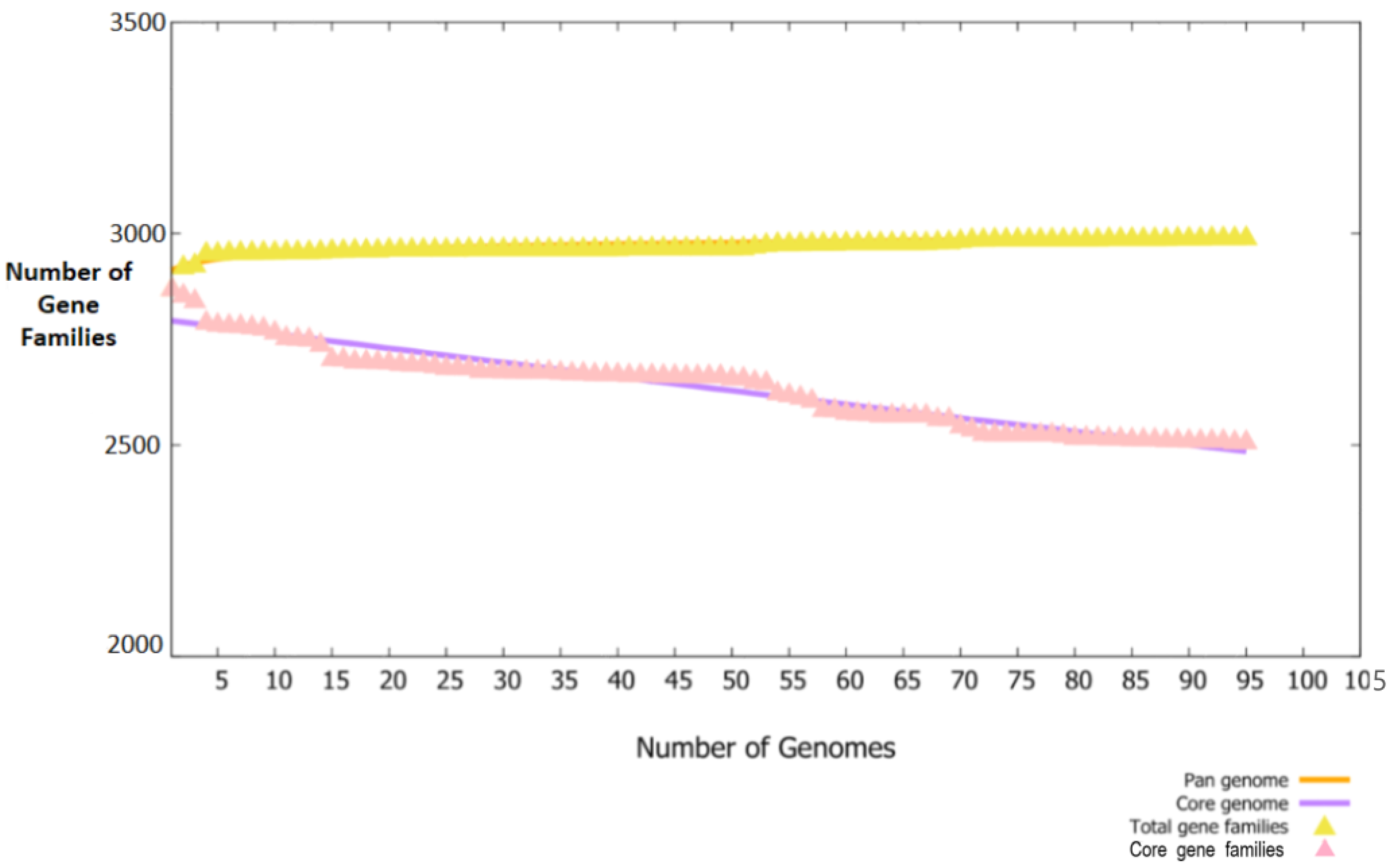
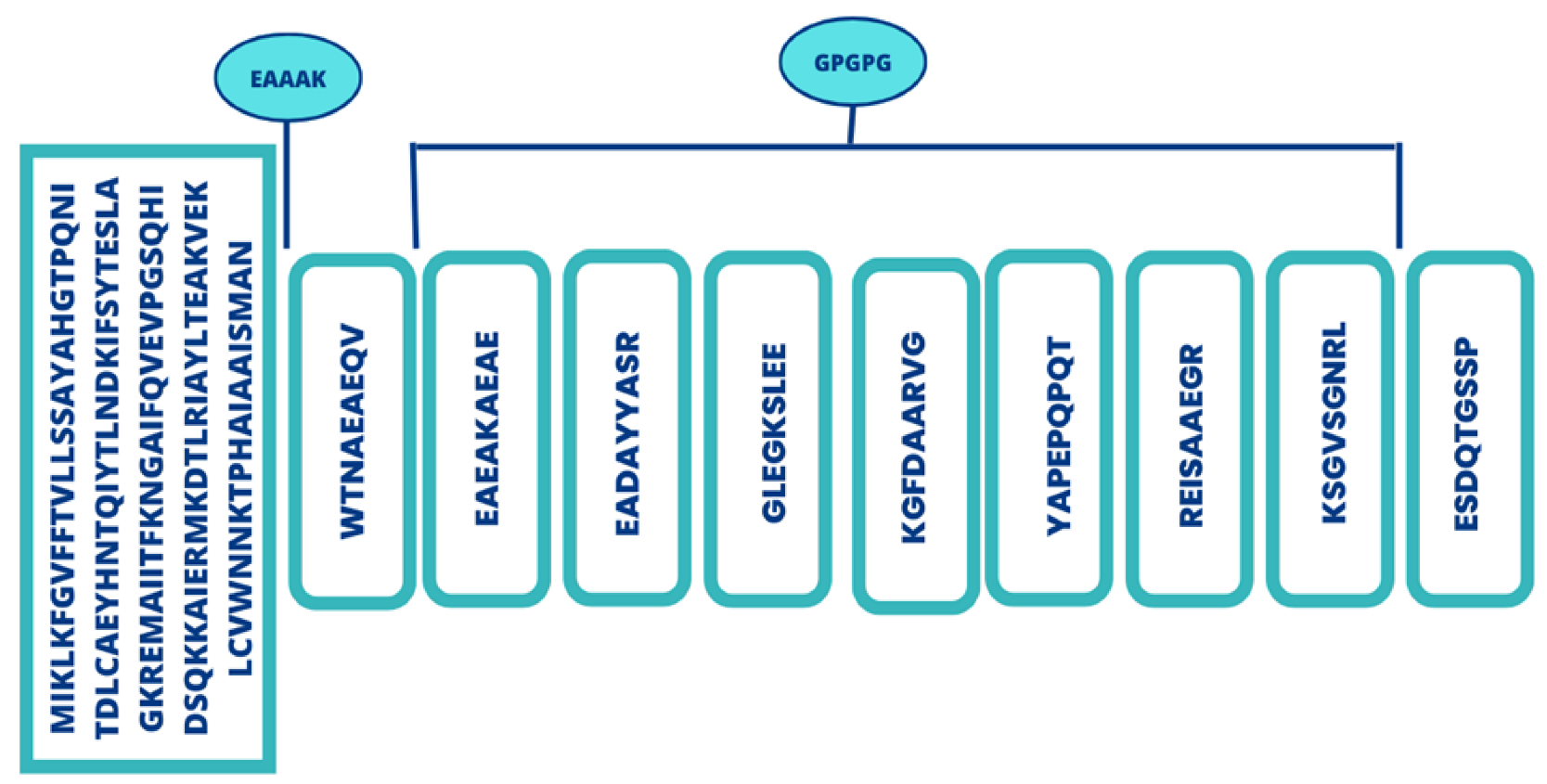


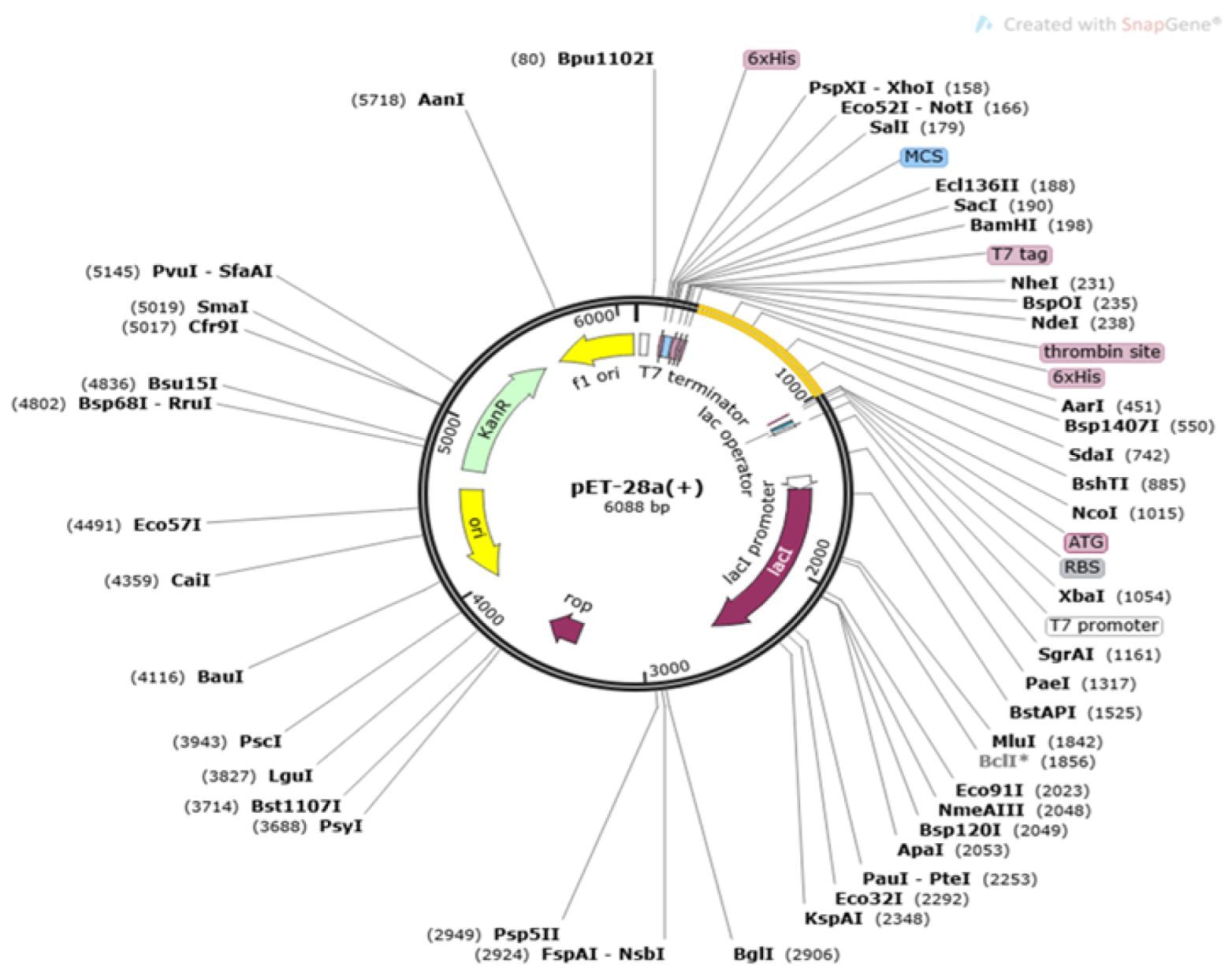
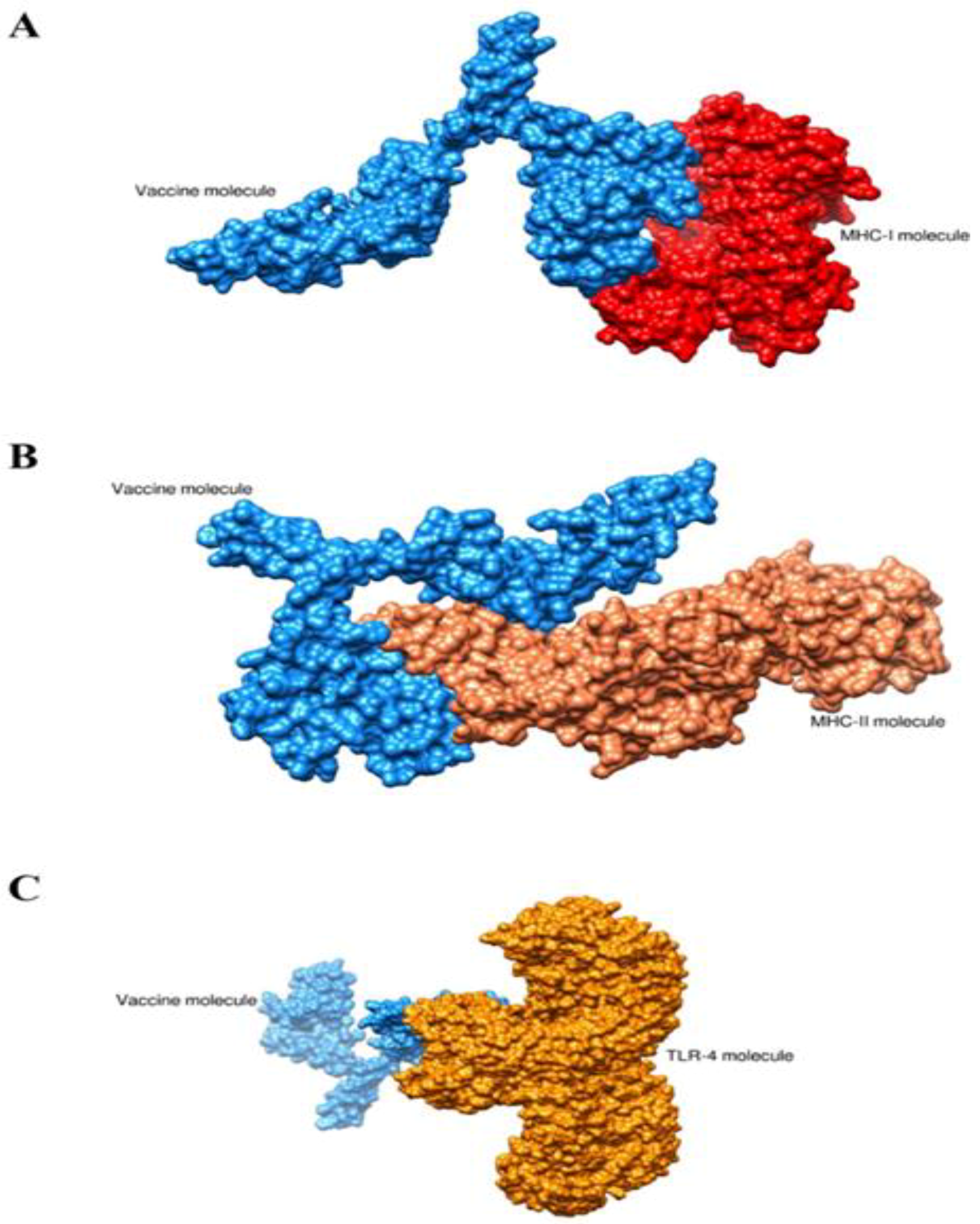
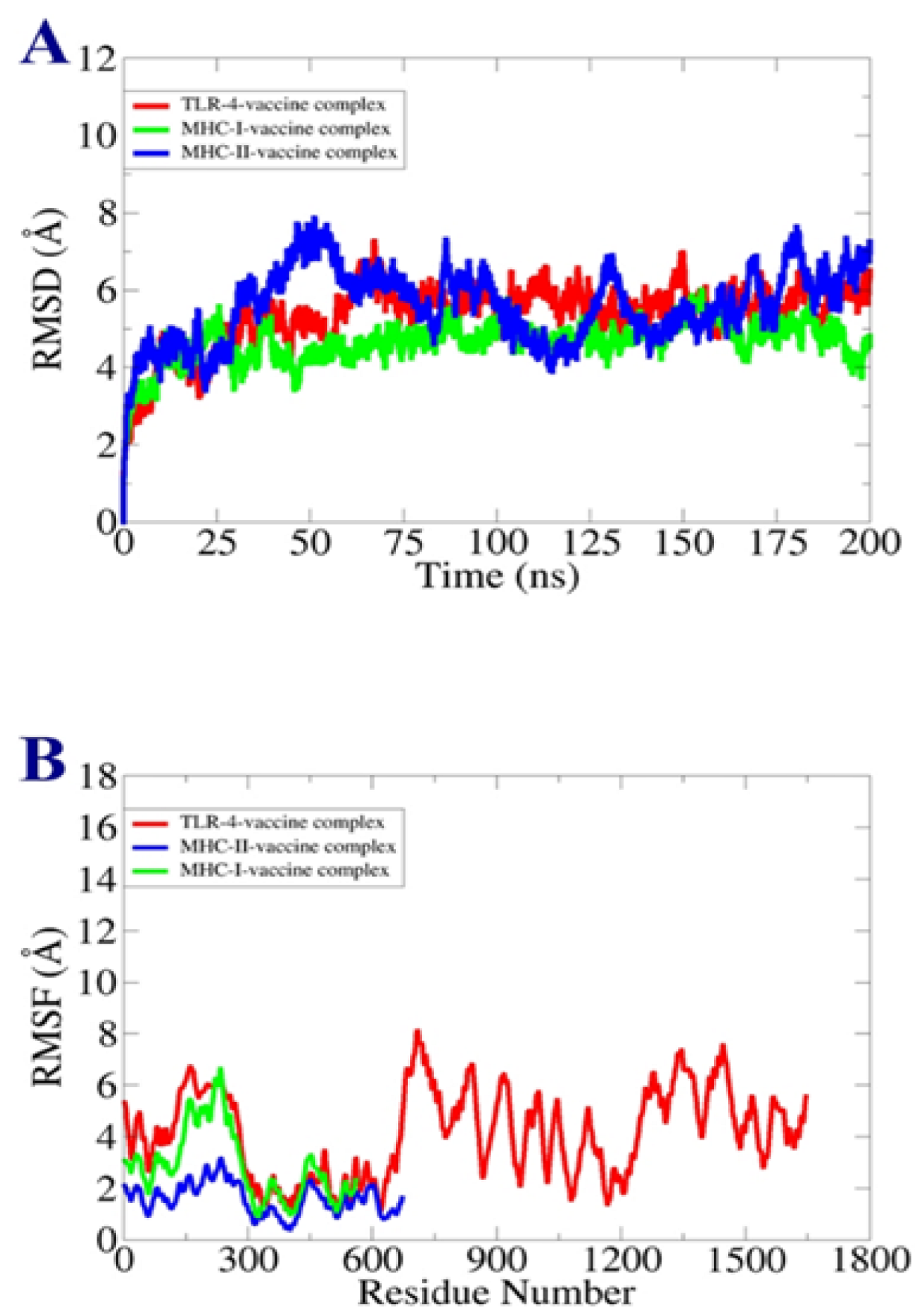
| Proteins | Predicted B-Cells Epitopes |
|---|---|
| core/352/1/Org1_Gene809 (catalase) | GAPIPDNQNSLTAGERGPILMQ |
| KRHPRTHLRSAT | |
| QGHKHWTNAEAEQVIGRTREST | |
| HRLGTHYESIPVNQPKCPVHHYH | |
| GIKTGNPDAYYEPNSFNGPVEQPSAKEPPLCISG | |
| ADRYNHRIGNDDYS | |
| LKDAHGYDANTIALNEKI | |
| KRHPRTHLRSAT | |
| QGHKHWTNAEAEQVIGRTREST | |
| core/1230/1/Org1_Gene1297 (siderophore ABC transporter substrate-binding protein) | VPFPEYLKKYQGDDYAKVGTLFEPDYEAVNA |
| EAEAKAEAEKLNKELAA | |
| PAAPNLSIGNHGQPISSE | |
| DAAIGREGNSAKQ | |
| core/2014/1/Org1_Gene1274 (pyridoxamine 5′-phosphate oxidase) | SSDDFTQSAEPF |
| DAEADAYYASRPR | |
| QSRPLESRFALE | |
| core/2047/1/Org1_Gene1622 (superoxide dismutase) | LPALPYDYDALAPFMSRE |
| GLEGKSLEEIVK | |
| core/2062/1/Org1_Gene1723 (peptidylprolyl isomerase) | VKFGNMDKGFDAARVGTGGSNYPDLPAEFSKEPF |
| core/2194/1/Org1_Gene1299 (superoxide dismutase family protein) | SCAPGEKDGKIVPA |
| HYDPGNTHHHLGPEGDGHMG | |
| GDNYSDKPEPLGGGG | |
| core/123/4/Org4_Gene2756 (septation protein A) | DGSKKTPEQLDRERRLAQAMID |
| LAGNIKQARADNAEKAGIEGAAKKFAGLDLGSLLSGGAAYPSAVAGGASPTSGAATGTTPTTGATVDLSGDKQKF | |
| VINGQRVKINDSFRTFASP | |
| INLPQQAQPQGVQVASLDPSIGMAQAYAPEPQPQTAAAAINQIAPQQPVPEAKISDALLRQNDMALGGALAPQGQAPQQVADTSGYFPAAPSADSAPIMGSYAAPRQGGVN | |
| DALRAKPQTEYGFTTLPDGTVLRTDKRSGNAEPIYSAGQKPTSDMQEY | |
| FAVSQGFKGSFADYQQAMKKAGASSTNVSVGEGDKFYEALDKKNAD | |
| DAGIQARSKLAQIERLGGLMQASPT | |
| LVPQQRQPGSGPMSDA | |
| QYQIQMGDIADQVANREISAAEGRNRIKNLKNPLEGFRTSTKDKTPGKSGVSGNRLRFNPQTG | |
| core/389/1/Org1_Gene1317 (hypothetical protein) | SVVSRNISGAKDADYSRR |
| SALYSADNYSGSPSG | |
| VVGGTRMGRDVSDYLDQRDAL | |
| ARKVTFEQSAVLTPGVAGKAVTVDGVPLSHDTFDQPFGTG | |
| ESDQTGSSPDQTGLFSWSGSPAIPGAGLSAGIAGTIEVSVPFIASEGGSALLLRDGGANGANYKYNVQGAAGFSDRLRALNEAFSEPMVFDAAAGISSSSSLIGYS | |
| KRQKANSEFTYNGT | |
| FALSNATGVDID | |
| core/2225/1/Org1_Gene971 (Binding-protein-dependent transport systems inner membrane component) | SKKNLPNNAGDLGLGAGAATPGSSQ |
| ISYGNERPVAVCDADTCWSQ | |
| core/2432/1/Org1_Gene927 (4-hydroxy-2-oxoheptanedioate aldolase) | SPVGSNTTNSASTASNSTSAANKASVDYD |
| NQDPTQPMDPTQY |
| Selected Epitopes | Antigenicity | Allergen City | Water Solubility | Toxicity |
|---|---|---|---|---|
| WTNAEAEQV | 7.637 | Non-Allergenic | Good water soluble | Non-toxigenic |
| EAEAKAEAE | 9.62 | |||
| EADAYYASR | 0.93 | |||
| GLEGKSLEE | 1.9 | |||
| KGFDAARVG | 1.7 | |||
| YAPEPQPQT | 1.8 | |||
| REISAAEGR | 1.7 | |||
| KSGVSGNRL | 0.9526 | |||
| ESDQTGSSP | 2.0515 |
| Amino Acid Residues Pairs | Chi3 | Energy |
|---|---|---|
| Ser 15-Pro23 | 72.16 | 2.8 |
| Tyr 18-Thr22 | −69.94 | 3.3 |
| His 20-Ala59 | 124.08 | 4.12 |
| Gln 24-Glu57 | 112.52 | 2.75 |
| Ile 38-Leu41 | 110.17 | 4.3 |
| Thr 49-Ala53 | 102.94 | 6.53 |
| Phe 69-His78 | −73.43 | 2.77 |
| Gln 70-Val73 | 105.4 | 1.08 |
| Ala 101-Ala123 | 124.39 | 4.67 |
| Cys 107-Lys112 | 112.51 | 0.94 |
| Gly 135-Asn142 | 102.4 | 6.24 |
| Asn 161-Ala183 | 110.79 | 4.33 |
| Lys 196-Ser201 | 110.02 | 1.36 |
| Pro 222-Gln229 | 109.88 | 1.95 |
| Pro 250-Ser253 | 87.28 | 5.32 |
| Ser 253-Gly257 | 97.61 | 2.49 |
| Gly 265-Ser272 | −101.99 | 1.73 |
| Model | RMSD | MolProbity | Clash Score | Poor Rotamers | Rama Favored | Galaxy Energy |
|---|---|---|---|---|---|---|
| Initial | 0.000 | 3.643 | 92.4 | 6.0 | 87.1 | 27,990.35 |
| Model 1 | 0.948 | 1.475 | 2.3 | 0.5 | 92.6 | −4210.72 |
| Model 2 | 0.892 | 1.396 | 1.9 | 0.5 | 93.0 | −4210.18 |
| Model 3 | 1.434 | 1.475 | 2.3 | 0.0 | 92.6 | −4201.35 |
| Model 4 | 0.942 | 1.503 | 2.3 | 0.5 | 91.9 | −4198.98 |
| Model 5 | 0.841 | 1.445 | 2.3 | 0.5 | 93.4 | −4197.66 |
| Model 6 | 0.815 | 1.314 | 1.6 | 1.0 | 94.1 | −4196.15 |
| Model 7 | 1.469 | 1.258 | 0.9 | 0.0 | 92.3 | −4195.66 |
| Model 8 | 0.952 | 1.202 | 0.7 | 0.0 | 92.3 | −4191.22 |
| Model 9 | 0.849 | 1.349 | 1.4 | 0.5 | 92.3 | −4189.56 |
| Model 10 | 0.932 | 1.475 | 2.3 | 0.0 | 92.6 | −4189.56 |
| Rank | Solution Number | Global Energy | Attractive VdW | Repulsive VdW | ACE | HB |
|---|---|---|---|---|---|---|
| 1 | 1 | −5.48 | −5.02 | 0.19 | 1.69 | 0.00 |
| 2 | 7 | 2.79 | −25.90 | 7.18 | 14.87 | −2.19 |
| 3 | 9 | 2.98 | −4.25 | 1.70 | −2.11 | 0.00 |
| 4 | 4 | 7.47 | −2.11 | 0.00 | 2.28 | 0.00 |
| 5 | 10 | 14.13 | −1.94 | 0.00 | −0.09 | 0.00 |
| 6 | 6 | 23.01 | −42.36 | 98.05 | 10.51 | −4.03 |
| 7 | 3 | 67.55 | −64.86 | 217.80 | 2.60 | −8.81 |
| 8 | 5 | 68.38 | −38.43 | 155.88 | 3.27 | −7.66 |
| 9 | 8 | 107.39 | −50.90 | 220.11 | 1.40 | −8.98 |
| 10 | 2 | 4497.19 | −69.73 | 5774.65 | −4.08 | −10.33 |
| Rank | Solution Number | Global Energy | Attractive VdW | Repulsive VdW | ACE | HB |
|---|---|---|---|---|---|---|
| 1 | 9 | 0.64 | −3.25 | 0.00 | 2.36 | −0.27 |
| 2 | 2 | 5.11 | −0.46 | 0.00 | 1.30 | 0.00 |
| 3 | 3 | 5.66 | −0.00 | 0.00 | 0.00 | 0.00 |
| 4 | 5 | 16.49 | −5.54 | 1.04 | 3.39 | 0.00 |
| 5 | 6 | 25.99 | −4.47 | 0.00 | 5.30 | −0.38 |
| 6 | 1 | 36.43 | −4.81 | 1.30 | 4.13 | 0.00 |
| 7 | 7 | 68.21 | −33.20 | 129.09 | 10.91 | −2.55 |
| 8 | 10 | 1005.87 | −47.94 | 1306.99 | 8.39 | −5.44 |
| 9 | 4 | 1285.73 | −45.58 | 1683.22 | −6.34 | −3.73 |
| 10 | 8 | 1663.10 | −38.48 | 2141.13 | 4.25 | −2.73 |
| Rank | Solution Number | Global Energy | Attractive VdW | Repulsive VdW | ACE | HB |
|---|---|---|---|---|---|---|
| 1 | 7 | −2.69 | −2.65 | 0.00 | 1.51 | 0.00 |
| 2 | 3 | 0.53 | −25.46 | 10.39 | 10.38 | −1.62 |
| 3 | 9 | 1.05 | −6.07 | 2.39 | −1.62 | −0.33 |
| 4 | 2 | 6.64 | −39.02 | 35.23 | 16.74 | −7.23 |
| 5 | 8 | 24.74 | −12.29 | 8.51 | 7.35 | −1.00 |
| 6 | 6 | 34.77 | −18.81 | 7.52 | 17.81 | −0.76 |
| 7 | 5 | 113.53 | −41.79 | 199.10 | 8.01 | −5.16 |
| 8 | 4 | 355.02 | −21.74 | 471.02 | −3.09 | −1.73 |
| 9 | 10 | 452.38 | −29.95 | 571.85 | 11.56 | −4.40 |
| 10 | 1 | 4146.04 | −63.37 | 5273.51 | 10.33 | −11.76 |
| Energy Parameter | TLR-4-Vaccine Complex | MHC-I-Vaccine Complex | MHC-II-Vaccine Complex |
|---|---|---|---|
| MM-GBSA | |||
| VDWAALS | −150.96 | −137.99 | −131.57 |
| EEL | −96.37 | −81.61 | −80.22 |
| EGB | 35.00 | 32.08 | 18.00 |
| ESURF | −22.85 | −19.27 | −21.94 |
| Delta G gas | −247.33 | −219.6 | −211.79 |
| Delta G solv | 12.15 | 12.81 | −3.94 |
| Delta Total | −259.48 | −206.79 | −215.73 |
| MM-PBSA | |||
| VDWAALS | −150.96 | −137.99 | −131.57 |
| EEL | −96.37 | −81.61 | −80.22 |
| EPB | 35.00 | 32.08 | 18.00 |
| ENPOLAR | −22.85 | −19.27 | −21.94 |
| Delta G gas | −247.33 | −219.6 | −211.79 |
| Delta G solv | 12.15 | 12.81 | −3.94 |
| Delta Total | −235.18 | −206.79 | −215.73 |
Disclaimer/Publisher’s Note: The statements, opinions and data contained in all publications are solely those of the individual author(s) and contributor(s) and not of MDPI and/or the editor(s). MDPI and/or the editor(s) disclaim responsibility for any injury to people or property resulting from any ideas, methods, instructions or products referred to in the content. |
© 2023 by the authors. Licensee MDPI, Basel, Switzerland. This article is an open access article distributed under the terms and conditions of the Creative Commons Attribution (CC BY) license (https://creativecommons.org/licenses/by/4.0/).
Share and Cite
Malik, M.; Khan, S.; Ullah, A.; Hassan, M.; Haq, M.u.; Ahmad, S.; Al-Harbi, A.I.; Sanami, S.; Abideen, S.A.; Irfan, M.; et al. Proteome-Wide Screening of Potential Vaccine Targets against Brucella melitensis. Vaccines 2023, 11, 263. https://doi.org/10.3390/vaccines11020263
Malik M, Khan S, Ullah A, Hassan M, Haq Mu, Ahmad S, Al-Harbi AI, Sanami S, Abideen SA, Irfan M, et al. Proteome-Wide Screening of Potential Vaccine Targets against Brucella melitensis. Vaccines. 2023; 11(2):263. https://doi.org/10.3390/vaccines11020263
Chicago/Turabian StyleMalik, Mahnoor, Saifullah Khan, Asad Ullah, Muhammad Hassan, Mahboob ul Haq, Sajjad Ahmad, Alhanouf I. Al-Harbi, Samira Sanami, Syed Ainul Abideen, Muhammad Irfan, and et al. 2023. "Proteome-Wide Screening of Potential Vaccine Targets against Brucella melitensis" Vaccines 11, no. 2: 263. https://doi.org/10.3390/vaccines11020263
APA StyleMalik, M., Khan, S., Ullah, A., Hassan, M., Haq, M. u., Ahmad, S., Al-Harbi, A. I., Sanami, S., Abideen, S. A., Irfan, M., & Khurram, M. (2023). Proteome-Wide Screening of Potential Vaccine Targets against Brucella melitensis. Vaccines, 11(2), 263. https://doi.org/10.3390/vaccines11020263









